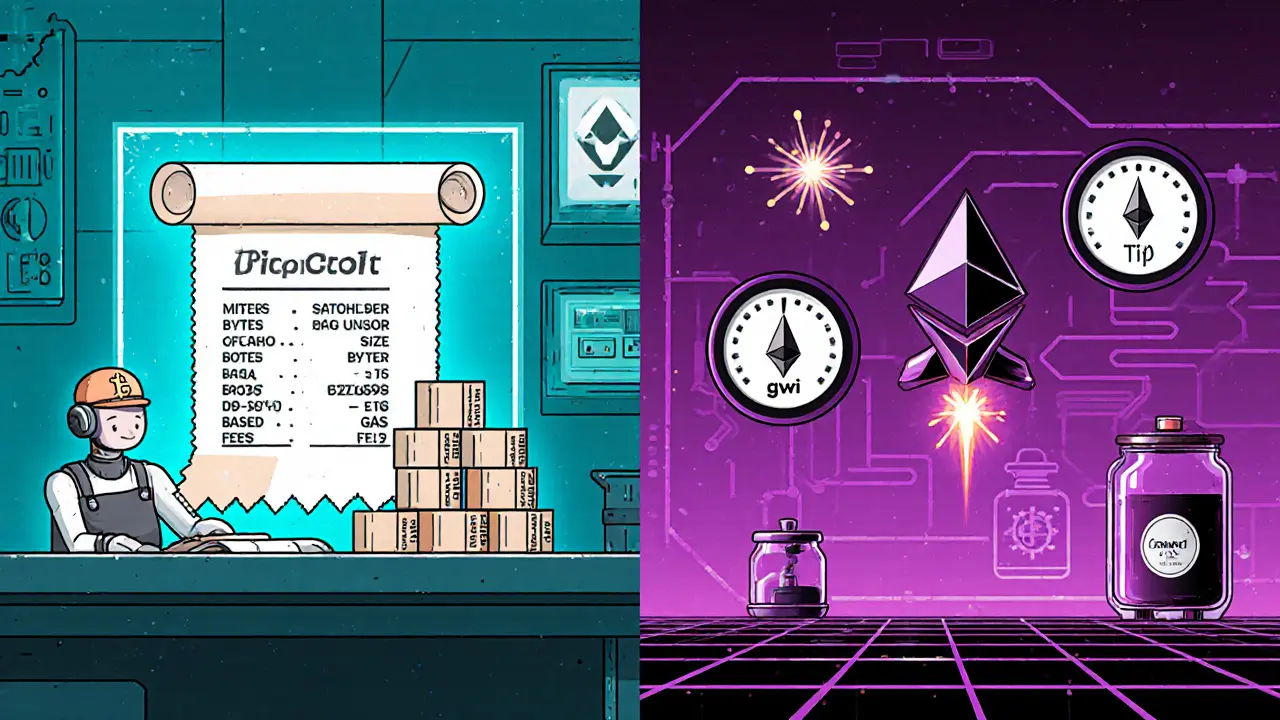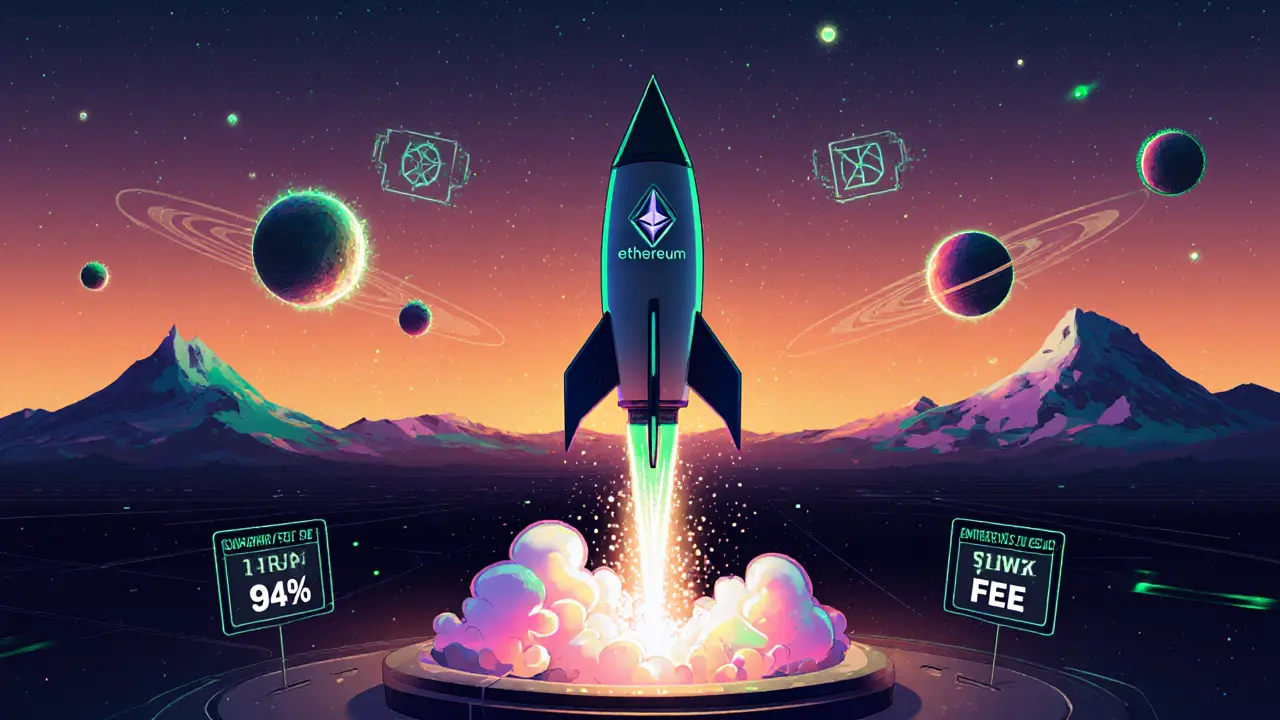Gas Fees vs Transaction Fees: Key Differences Explained
 Nov, 8 2024
Nov, 8 2024
Transaction & Gas Fee Calculator
Estimated Fees
Ever wondered why sending crypto on one network feels cheap while another network burns a hole in your wallet? The culprit is the fee model each blockchain uses. In this guide we break down the two main fee types - gas fees and transaction fees - and show you how they work, where they apply, and how you can keep costs under control.
What Exactly Is a Transaction Fee?
Transaction Fees are the payments users attach to any blockchain transaction to compensate the network’s validators or miners for processing and securing the data. They exist on every public ledger, from Bitcoin to Litecoin, and are usually expressed in the native cryptocurrency (e.g., BTC, LTC). The fee amount is determined by two main factors: the size of the transaction (in bytes) and the current demand on the network. When the mempool is crowded, users offer higher fees to get priority.
Introducing Gas Fees - The Smart‑Contract Specialty
Gas Fees are a specialized subset of transaction fees that only appear on blockchains capable of running smart contracts, such as Ethereum, Solana, Avalanche, and Polkadot. The word “gas” comes from the idea of paying for computational fuel: each operation inside a contract consumes a certain amount of gas, and the total cost is the gas‑units‑used multiplied by the gas price.
How the Two Fee Types Are Calculated
Below is a side‑by‑side look at the core calculations.
| Aspect | Transaction Fees | Gas Fees |
|---|---|---|
| Primary Metric | Satoshis per byte (BTC) or equivalent | Gas units × gas price (gwei, lamports, etc.) |
| Components | Fee = size × rate | Base fee + tip (post‑London Ethereum) + optional priority fee |
| Unit | Satoshi (10⁻⁸ BTC) or other smallest coin unit | gwei (10⁻⁹ ETH), lamport (SOL), or similar |
| Network Influence | Miner/validator competition for block space | Validator competition for compute cycles & contract execution |
| Typical Cost Range (2025) | $0.10 - $5 per transaction (varies by Bitcoin congestion) | From <$0.01 on Layer‑2 to >$30 during Ethereum “gas wars” |

Scope: Which Networks Use Which Fee?
All public blockchains charge some form of transaction fee, but only smart‑contract platforms have gas. Here’s a quick rundown:
- Bitcoin, Litecoin, Dogecoin, Bitcoin Cash - classic transaction fees.
- Ethereum, Polygon, Arbitrum, Optimism - gas fees (with Layer‑2 solutions offering cheaper gas).
- Solana, Avalanche, Polkadot - their own gas‑style fee models, often dubbed “transaction fees” but functionally identical to gas.
Why Gas Fees Appear More Volatile
Smart contracts can be simple (a plain ETH transfer) or complex (a multi‑step DeFi trade). Each operation consumes a different amount of gas. When a popular DApp spikes - for example, an NFT mint or a DeFi yield farm - the network’s demand for compute skyrockets, pushing the base fee higher. Users then compete by adding larger tips, creating a “gas war” that can push fees into the double‑digit dollar range.
In contrast, Bitcoin’s fee only reacts to how many bytes are waiting in the mempool. The fee curve is smoother because there’s no extra computational dimension to account for.
Practical Ways to Reduce Each Fee Type
Managing costs starts with timing and tools.
- Transaction fees (Bitcoin, etc.)
- Check fee‑estimation services (e.g., mempool.space) and aim for low‑traffic periods - weekends or early UTC mornings.
- Use RBF (Replace‑by‑Fee) to bump a stuck transaction instead of resending.
- Consolidate many small outputs into a single transaction to reduce size.
- Gas fees (Ethereum and peers)
- Monitor gas trackers like Etherscan Gas Tracker or EthGasStation.
- Schedule non‑urgent swaps or token approvals during off‑peak UTC windows (typically 02:00‑04:00 UTC).
- Leverage Layer‑2 rollups (Polygon, Arbitrum) for cheap execution.
- Batch multiple actions into a single contract call; developers often expose “multicall” functions.

Impact on Users and Enterprises
High fees shape behavior. A 2024 survey by Bitstamp found 73 % of Ethereum users actively monitor gas prices, while only 31 % of Bitcoin users do the same. Small‑value transfers (under $5) become impractical on Ethereum during peak periods, pushing users toward alternative chains like Solana (average fees <$0.01) or to Layer‑2 solutions.
Enterprises cite “gas costs” as the top barrier to building on Ethereum. In 2025, 67 % of blockchain‑focused firms said gas fees limited their product rollout, yet 89 % indicated they would move to a Layer‑2 or side‑chain if it cut fees by 80 % or more.
Future Outlook: Will Gas Fees Disappear?
Ethereum’s shift to Proof‑of‑Stake in 2022 cut energy usage but left fee levels largely unchanged. The roadmap’s upcoming sharding upgrades (expected 2025‑2026) promise to increase throughput dramatically, and analysts estimate potential fee reductions of up to 95 %.
Other blockchains are experimenting with dynamic fee markets and “proto‑danksharding” to bring down costs. Across the sector, the average fee per transaction is projected to fall 60‑80 % by 2026 thanks to Layer‑2 adoption and greater competition.
Quick Reference Cheat Sheet
- Gas Fees: Applies to smart‑contract chains; measured in gas units × price; volatile; mitigated with Layer‑2.
- Transaction Fees: Applies to every blockchain; measured by data size; more predictable; mitigated with timing and RBF.
- Best for low‑value transfers: Solana, Polygon, or Bitcoin during off‑peak.
- Best for complex contracts: Use Ethereum Layer‑2 or optimistic rollups.
What is the main difference between gas fees and transaction fees?
Gas fees are a type of transaction fee that exists only on smart‑contract platforms. They charge for the computational work a contract performs, while traditional transaction fees simply pay for moving data on the ledger.
Why do Ethereum gas prices sometimes spike to $30 or more?
During heavy usage - NFT drops, DeFi liquidations, or popular dApp launches - demand for compute exceeds supply. Validators prioritize higher‑tipping transactions, driving the base fee up and creating “gas wars”.
Can I avoid gas fees altogether?
Not completely. Every on‑chain action requires payment in the network’s native token. However, you can move to fee‑free testnets, use Layer‑2 solutions, or choose blockchains with near‑zero fees.
How do I estimate the right fee for a Bitcoin transaction?
Use fee‑estimation tools that analyze current mempool congestion and suggest a satoshi‑per‑byte rate. If speed isn’t critical, choose the “economy” recommendation.
Are Layer‑2 solutions safe for large‑scale projects?
Yes. Most rollups inherit Ethereum’s security model by posting transaction data on the main chain. Audits and bug‑bounty programs further reduce risk, making them viable for enterprise use.
Peter Brask
October 24, 2025 AT 10:52Trent Mercer
October 24, 2025 AT 11:51vonley smith
October 25, 2025 AT 10:27Melodye Drake
October 26, 2025 AT 07:20paul boland
October 26, 2025 AT 14:44harrison houghton
October 27, 2025 AT 13:56DINESH YADAV
October 28, 2025 AT 08:16rachel terry
October 28, 2025 AT 21:14